Background
- The evolution of human beings toward the ability to produce elements of language, such as sounds, words, sentences, is a topic that has long since been debated due to the difficulty of being able to trace one language back to its roots.
- Some experts believe that language arose suddenly, being created as needed. Other researchers tend to think that language is a result of manual gestures, but not of animal echoism (Corbalis, 2006).
- One of the strongest beliefs of language evolution has to do with evolution and natural selection – the idea that in terms of survival human beings were constrained to produce language. However, selectionist point on language evolution was cast back by some researchers (Pinker, 2007).

Thesis
According to the anatomical characteristics of humans, the ability to produce speech was pursuant to them. They lived among hominids (great apes) which noise and sounds they tried to come after. However, it is still a debatable issue on what was the first – language or speech in a human. The difference is that language is a system of signs and language phenomena in ideal implementation. Whereas speech is a product of materialization of language. The larynx allows humans for speech and language.
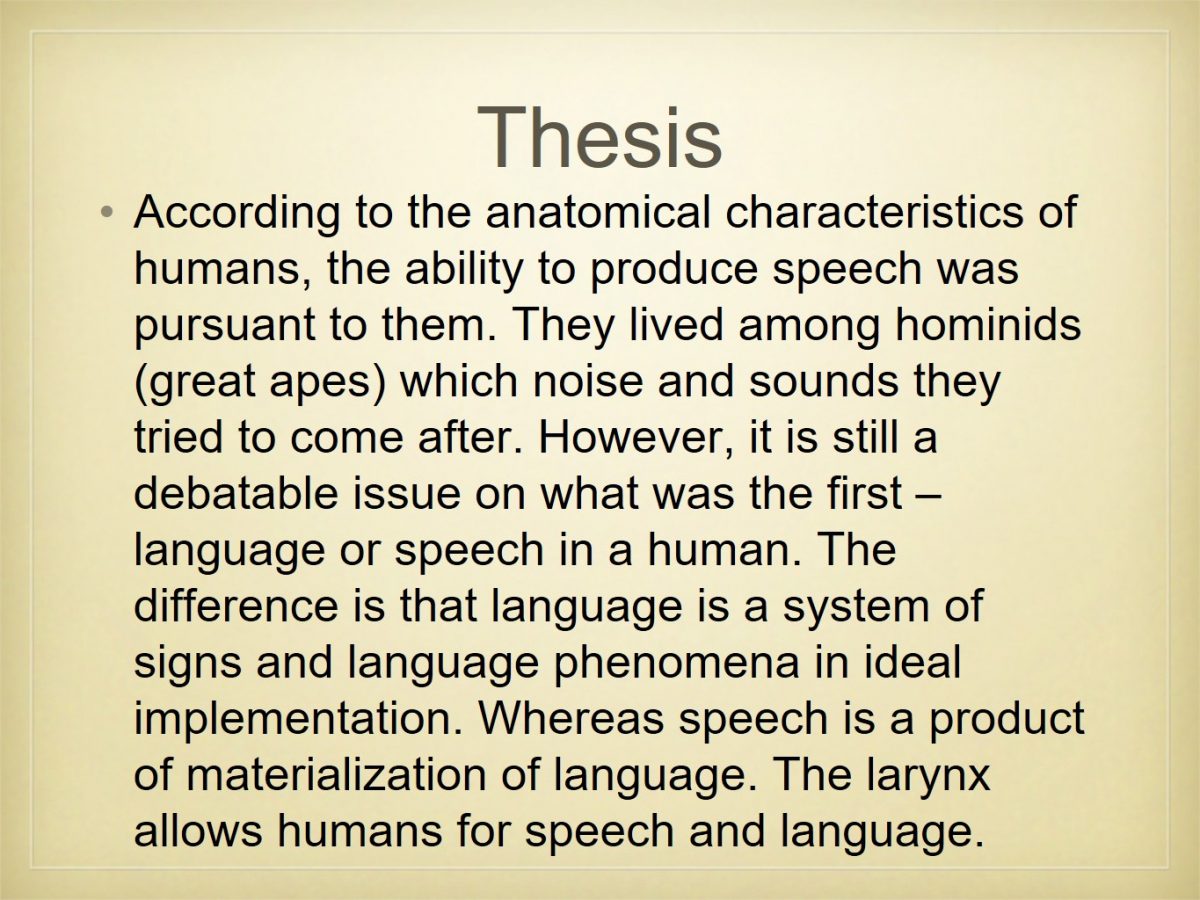
A brief Timeline
- Following the concepts of evolution, natural selection, communication and language:
- Chimpanzees used gestures to communicate.
- Homo Sapiens used gestures and guttural noises to communicate.
- Language is considered to appear, as an imitation of more gestures than sounds (Corbalis, 2006).
- Language is existent since the emergence of Homo Sapiens (Corbalis, 2006).
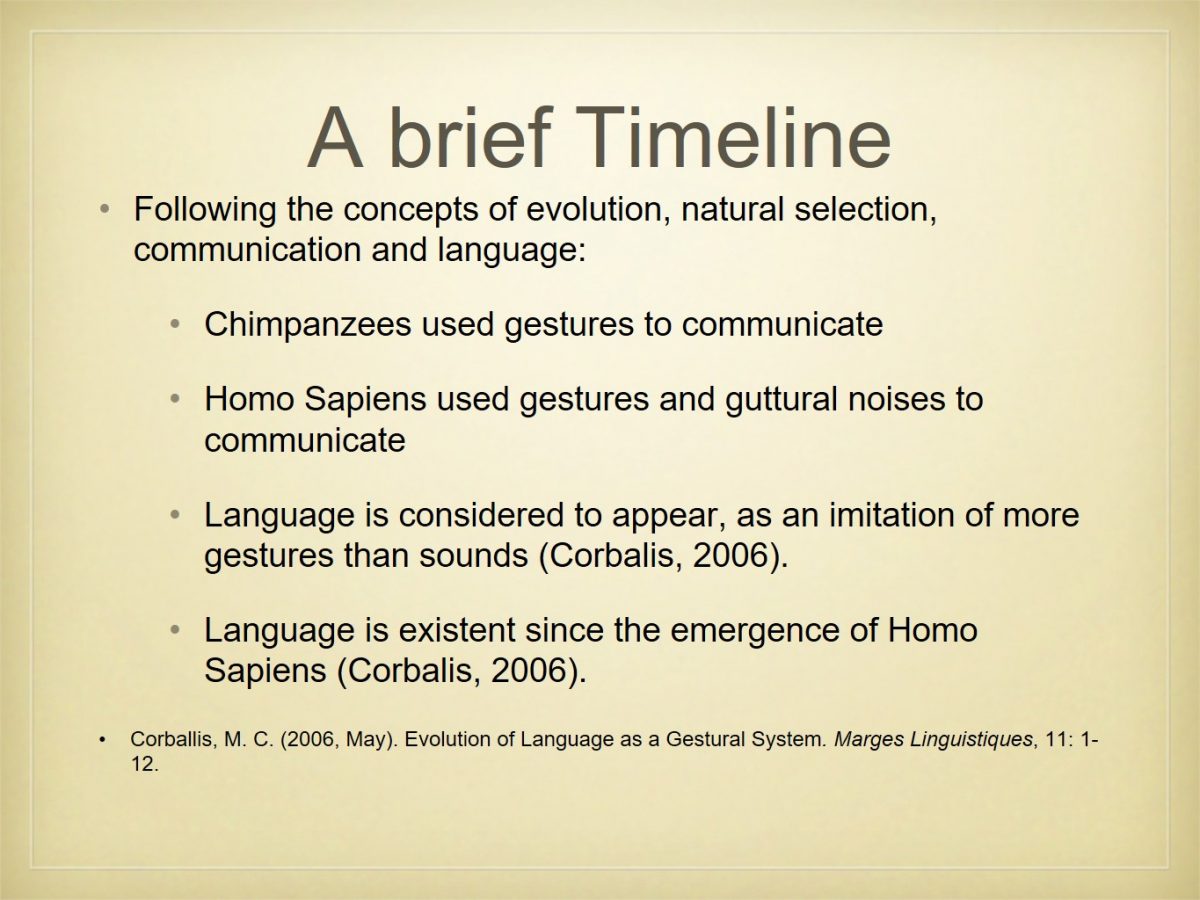
Natural Selection and Language
- Natural selection is the process by which traits that are likely to help an organism survive in its environment are inherited, thus becoming more common for that organism.
- Despite similar gestures or manners in behavior of human and primate, a man will never think the same as a chimpanzee (Hurford, 2008). The form of skull and a more diversified vocal tract with anatomically specific structure of tongue were suitable for Homo Sapiens to produce speech (Oudeyer, 2007).
- The first methods of communication were gestures, similar to present sign language.
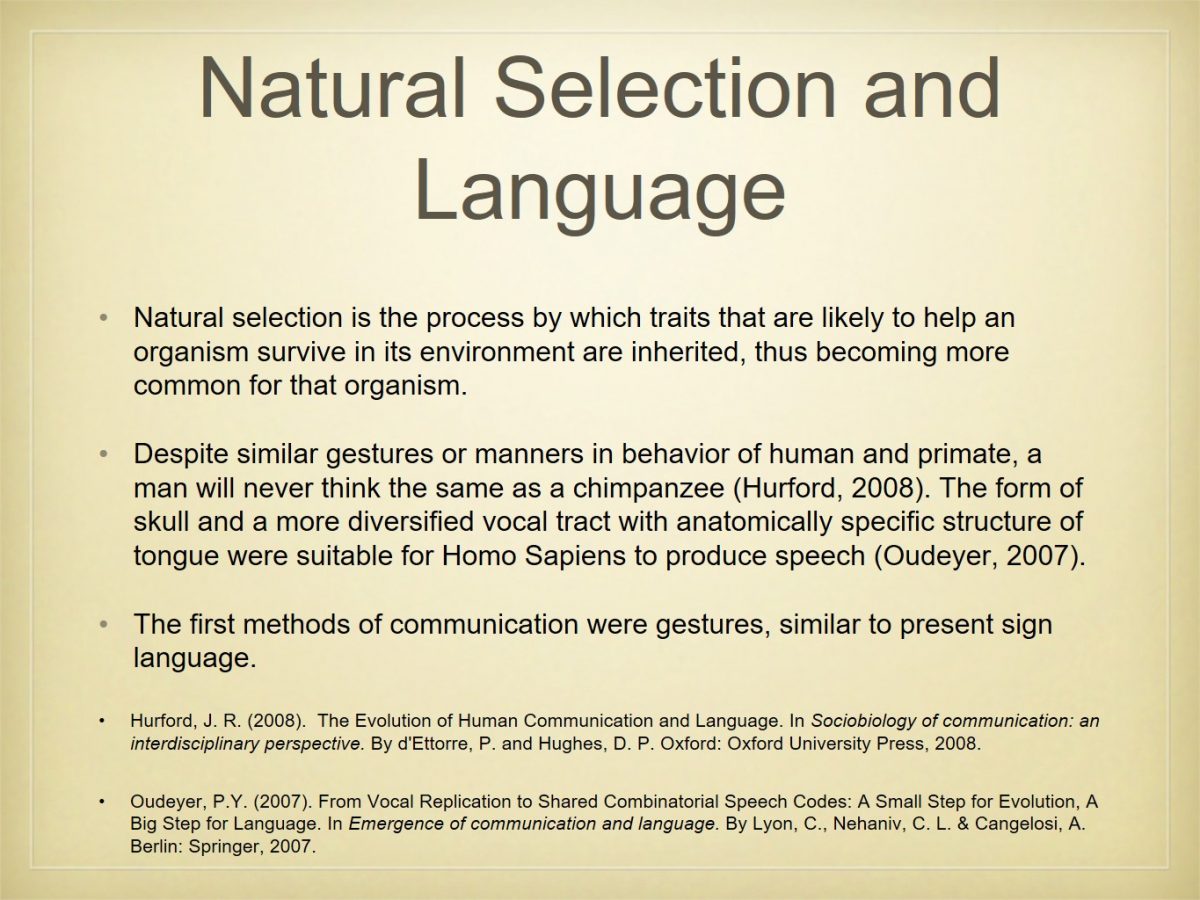
Birth of Language
- As of 150,000 years ago, humans were anatomically capable of speech. 100,000 years later, it was realized that this was what they were doing. Cognitive innatism presupposes that language is a result of biological evolution of humans via encoding information about language units in genes (Oudeyer, 2007).
- Humans were unable to form legitimate words, or words that had any solid meaning. All the same, through the use of gestures and associated sounds, they were able to convey their meaning. During time, an infant language would be formed. The question is that language is fairly considered to be a developing organism (Driem, 2008).
- Patterns in languages today can also be found in ancient languages, as they have derived from the same place and, apparently, from some protolanguage.
- Language did not arise suddenly. Language is something that has always been, though not in the ways that it is now. Once it had become a part of cognitive niche, humans used to implement it (Pinker, 2007).
- The more often produced “words” were used, the more common they become. A legitimate language was soon formed. It was a process of long duration.
- The minds of humans associate noises and gestures until patterns are formed. Once these patterns become familiar, humans use them to express themselves. Thus, a language.
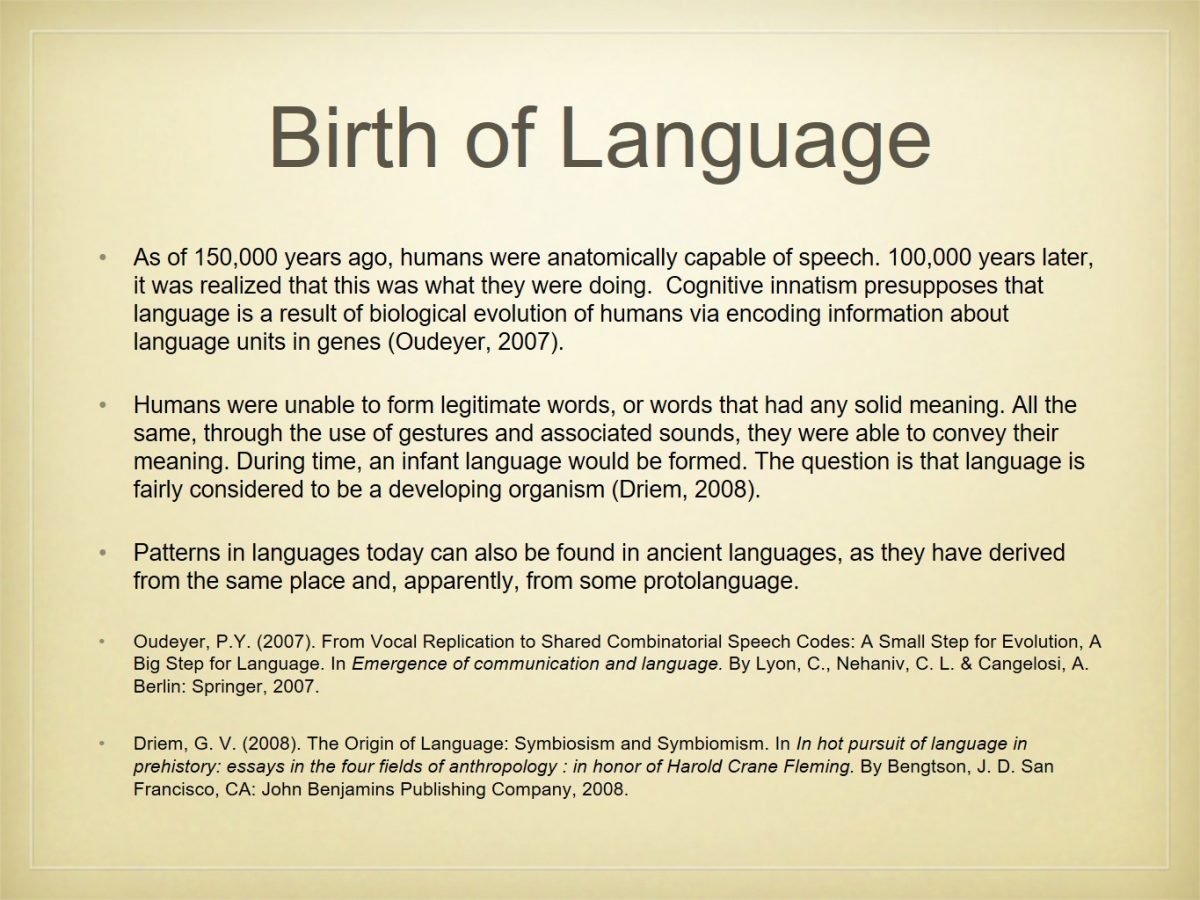
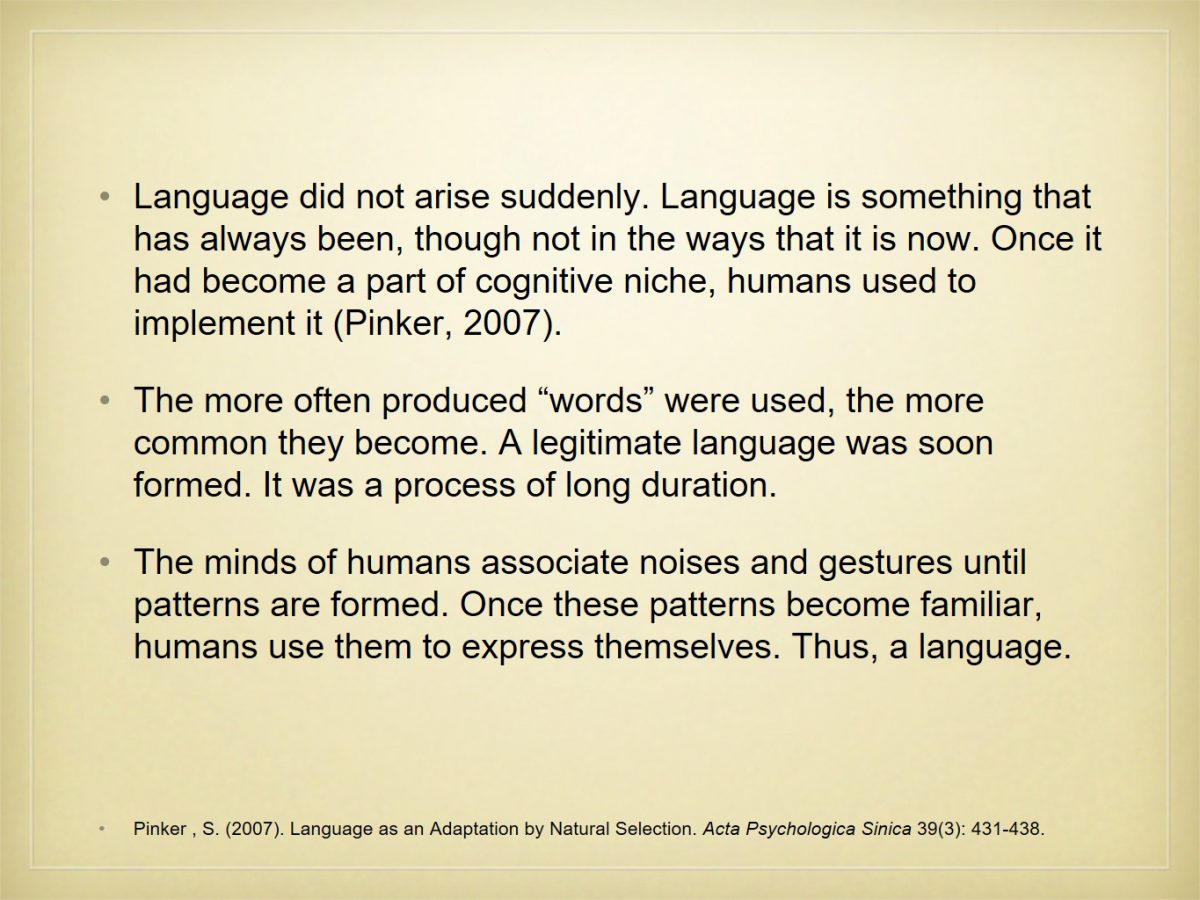
Evolution of Language
Characterizing changes that are internal to the language system include the transformation of gestural system reflected into system of sounds (Corbalis, 2006). Humans were no longer able to communicate by the use of noises, since the language system was form into distinct system of signs and memes (Driem, 2008). In many cases, the larynx cannot handle the vibrations associated with these noises. However, the set of language-producing organs is quite well-structured.
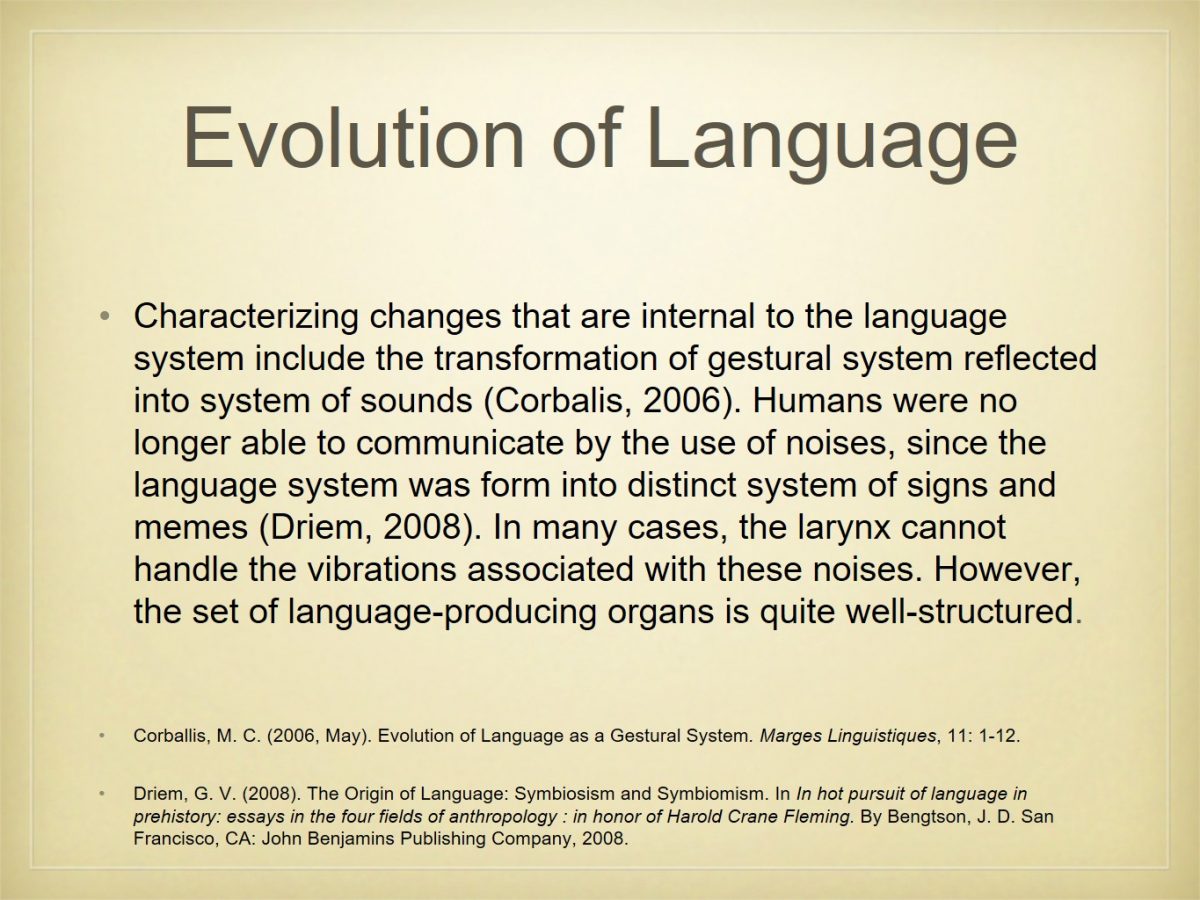
Larynx
Humans neurobiologically and physiologically are language ready. It is due to the cortex area of brain, larynx hands and facial peculiarities. The process of symbolization is that significant for language readiness of a human being (Arbib, 2003).
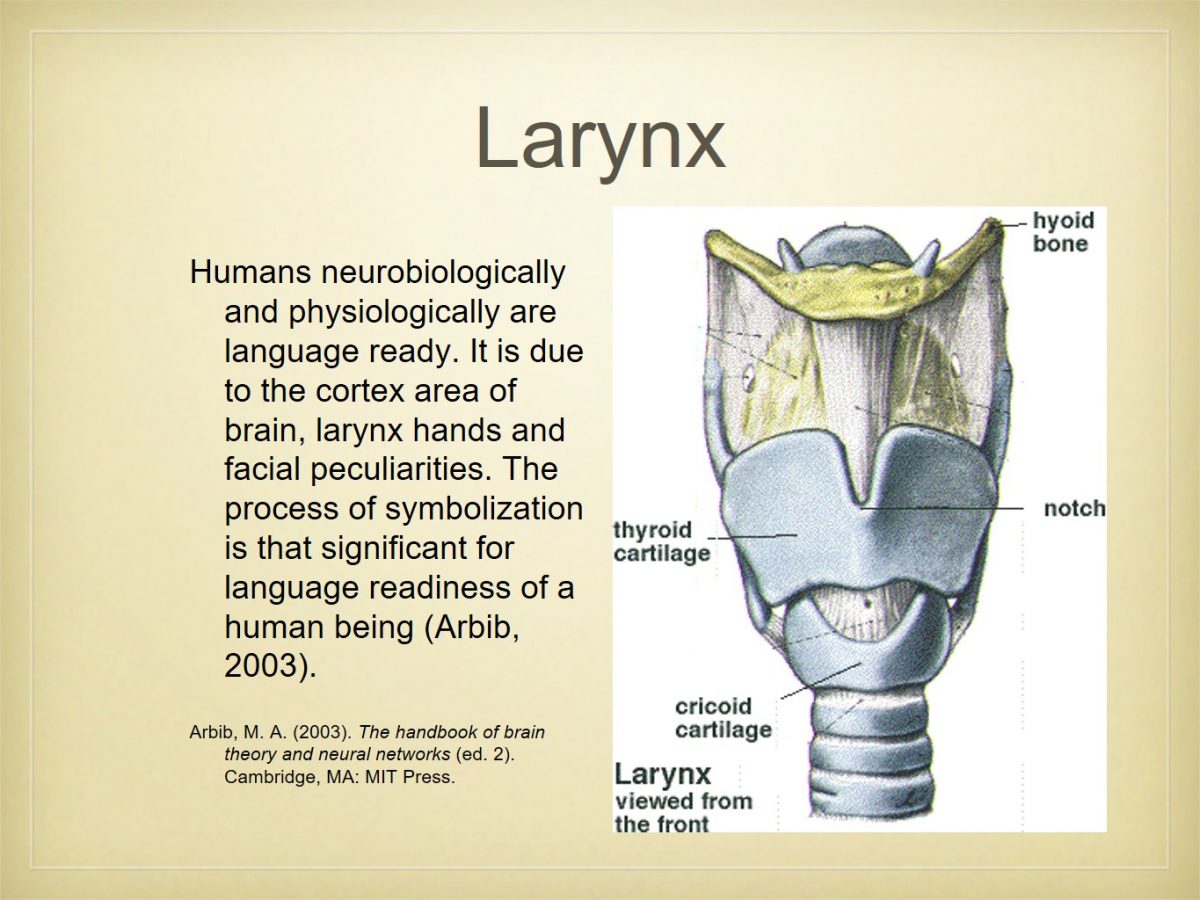
Evolution of of Language-Producing Organs
The process of organs of speech formation was evolutionary based on anatomical changes happened once a human being began transforming guttural noises into distinct gestures articulated by vocal apparatus (Corbalis, 2007). So-called “imitation game” of sounds and noises had overgrown into a perpetual training of vocal cords and tongue, so that to produce sounds more expressly (Oudeyer, 2007). As Homo Sapiens was “language-ready” 150,000 years ago and began using language only 50, 000 years ago, the theory of genetic development of language inherited by humans deserve being suitable here.
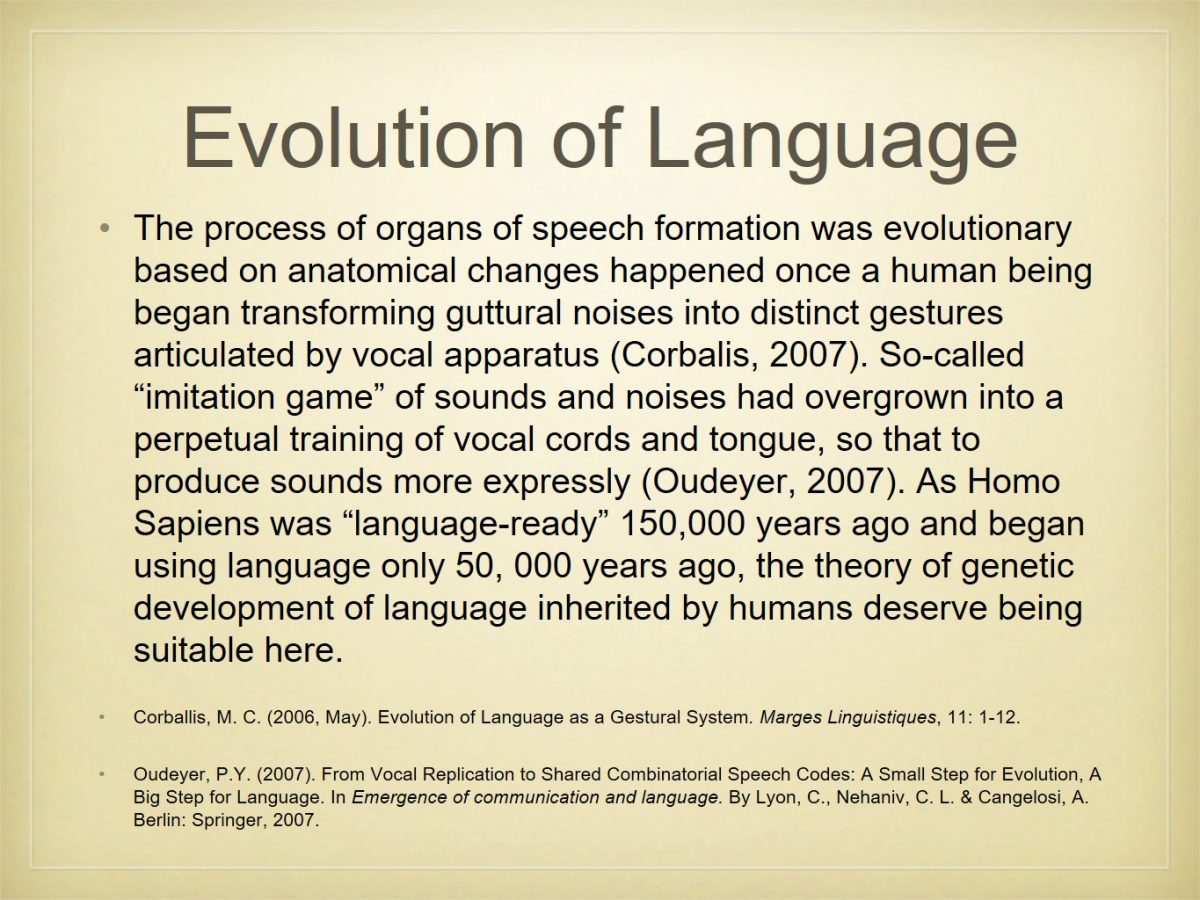
Conclusion
- As explained by the concept of natural selection, the use of language is a result of intellectual and anatomical efforts of a human to survive. Without this level of communication, humans are incapable of getting what they need to survive.
- Language has evolved from noises and hand gestures, that were transmitted from hands to organs of speech, to the precise words that are used in the present, allowing that each specific thing has its own word.
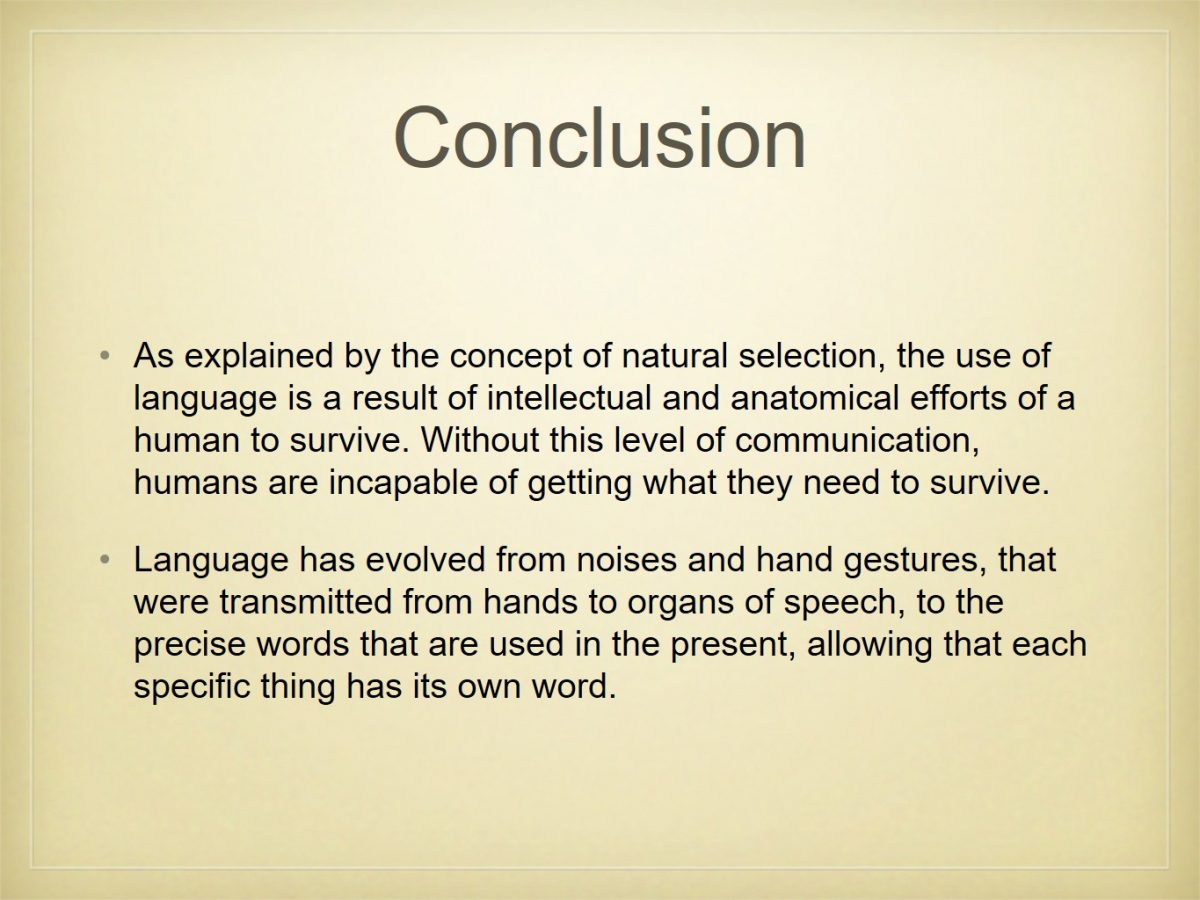
Reference
Arbib, M. A. (2003). The handbook of brain theory and neural networks (ed. 2). Cambridge, MA: MIT Press.
Corballis, M. C. (2006). Evolution of Language as a Gestural System. MargesLinguistiques, 11: 1-12.
Driem, G. V. (2008). The Origin of Language: Symbiosism and Symbiomism. In In hot pursuit of language in prehistory: essays in the four fields of anthropology : in honor of Harold Crane Fleming. By Bengtson, J. D. San Francisco, CA: John Benjamins Publishing Company.
Hurford, J. R. (2008). The Evolution of Human Communication and Language. In Sociobiology of communication: an interdisciplinary perspective. By d’Ettorre, P. and Hughes, D. P. Oxford: Oxford University Press.
Oudeyer, P.Y. (2007). From Vocal Replication to Shared Combinatorial Speech Codes: A Small Step for Evolution, A Big Step for Language. In Emergence of communication and language. By Lyon, C., Nehaniv, C. L. & Cangelosi, A. Berlin: Springer.
Pinker , S. (2007). Language as an Adaptation by Natural Selection. ActaPsychologicaSinica 39(3): 431-438.